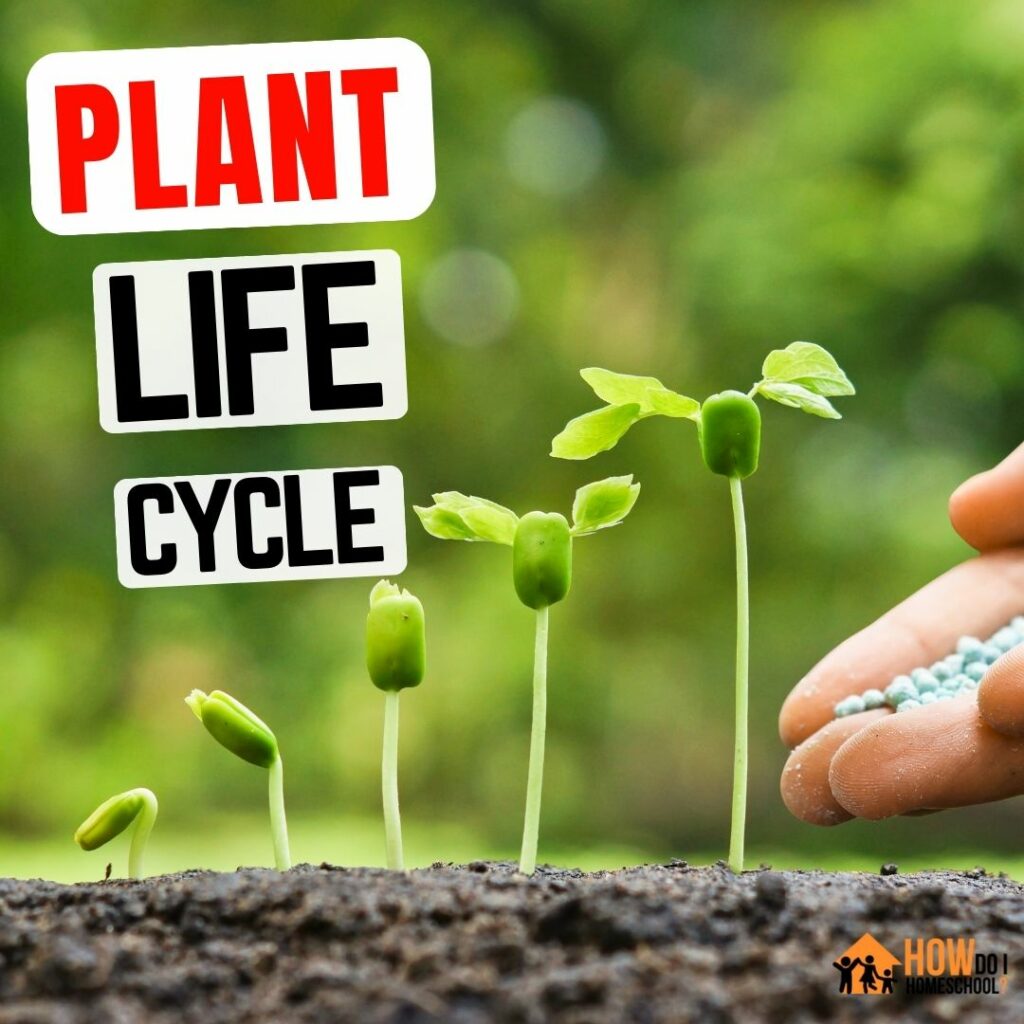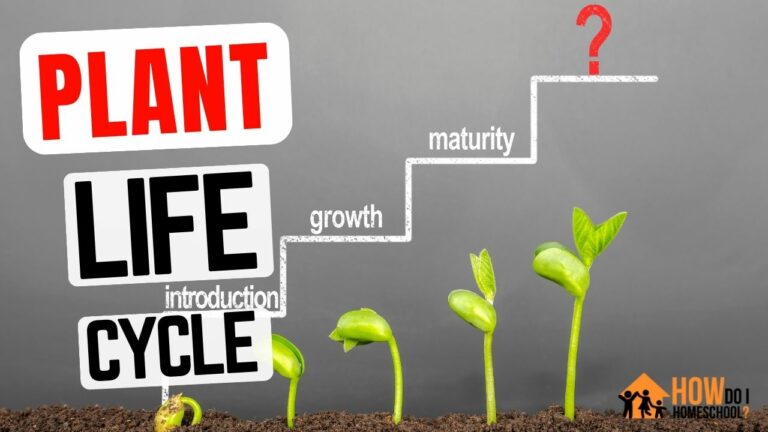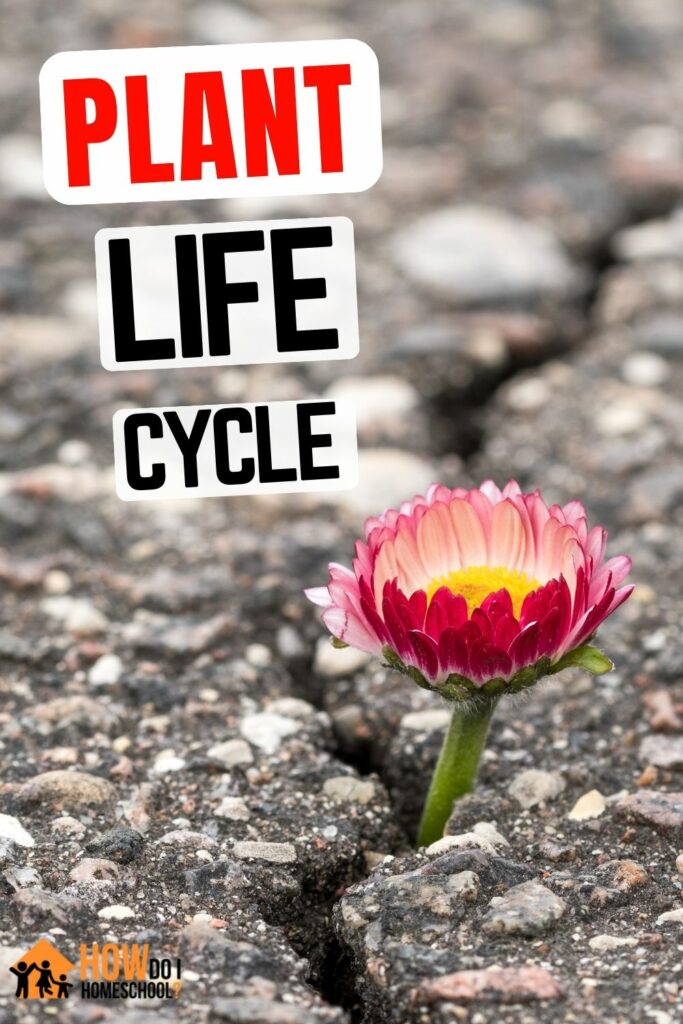Exploring nature and the natural world can be an interesting experience for kids. One of the best ways to help them understand the environment is to teach them about plant life cycles. Not only will they gain knowledge about plants, but also have fun learning experiences with hands-on experiments that allow them to see and touch the process of a plant’s growth! Here are some teaching ideas and fun experiments to help explain plant life cycles for kids engagingly.

I hope you enjoy reading this blog post. If you want to do my course on how to homeschool, click here.
 Please note: This is a guest post by Duke Brighton.
Please note: This is a guest post by Duke Brighton.
1. Plant A Garden
A great way to teach kids about plants is to let them get their hands dirty by planting a garden with flowers, vegetables, herbs, and other types of plants!
They can learn how to care for plants properly and water them as they grow and watch daily changes — from sprouts forming roots to leaves blooming on stems, etcetera.
Of course, if you don’t have the space or resources for a garden, you can still ensure your kids have constant access to fresh plants and flowers to learn with through a flower delivery subscription or service.
2. Create A Bean Plant Life Cycle Chart
Help your child create their own chart to visualize and understand the stages of a plant life cycle!
Use poster boards or paper, pictures cut from magazines or printouts, and markers or crayons to make the chart.
Include each step in the life cycle — such as seed, sprout, root, stem, leaf, flower — and encourage your kid to use their imagination to decorate it however they like.
They can even draw themselves in the process of caring for plants at each stage! This will help show them how important it is to care for our environment.
3. Participate In Seed Germination Experiments
Participating in seed germination is a great hands-on activity for kids.
You can buy seeds from the store, have them plant them in separate containers with soil, and then water each container every day to observe how they germinate and grow over time.
This will help your child understand the process of seed germination and growth more clearly and learn about the differences between plants — such as beans, corn or peas.
4. Have Fun With Worms
Worms are fascinating creatures that play an important role in helping plants grow!
Bring some worms home from outside and put them into a small box with dirt, water, and fresh vegetables so your child can watch what happens when worms come in contact with plants.
They will also observe how the worms move through the soil, aerating it and making it easier for roots to absorb nutrients.
5. Build A Plant Terrarium
Building a terrarium is a fun and educational activity that will help your children learn about plant life cycles and understand ecosystems better.
Start by finding a container — such as an aquarium or jar — and fill part of it with potting soil.
Then let your kids add plants, moss, rocks, and other decorations from nature.
You can even add small toys like dinosaurs or fairies to make it more exciting!
6. Read Aloud Books And Watch Videos
Introduce your child to the wonders of plant life cycles by reading books and watching educational videos together!
Check out some bookstores or libraries for children’s titles that explain each step of a plant’s growth, from seed to sprout, root, stem, leaf, flower and back to seed.
You can also search online for documentaries about plants — many use animation and humor to make learning about different stages fun!
Watching these videos with your kid will help them better understand how different types of plants grow.
Additionally, you can look for books or videos that focus on the importance of caring for our environment so that future generations can continue to enjoy these natural wonders.
7. Plant Art Projects
Let your creative side shine by turning plant life cycles into art projects!
Have your kid draw a picture of each stage from seed to sprout, root, stem, leaf, flower, and then back to seed as part of an art project on poster boards or paper.
You can even encourage them to construct plant life cycles out of clay or other materials.
8. Take A Nature Walk
Exploring nature is the perfect way for kids to learn about plants and their life cycles in a real-world setting!
Visit a nearby park, trail, garden, or another outdoor spot with your child and take some time to observe different types of plants closely — how they look, how their leaves feel, and what colors they come in.
This will help your little one understand more clearly the natural process that takes place as plants grow.
If you don’t know how to take a nature walk, watch the video below to learn how and get inspired!
9. Cook With Plants
Cooking provides an exciting opportunity to learn about plants and their life cycles! Have your child help you prepare food using ingredients like fruits, vegetables, herbs, and spices.
Explain how each plant starts out as a seed or sprout before it can be used in cooking. This will also help them understand why different foods must be harvested at certain times of the year.
10. Visit An Aquarium
Heading to an aquarium is another great way to learn about plant life cycles and ecosystems.
Find one with a large aquarium exhibit dedicated to showing off aquatic plants, like seagrasses, algae, coral reefs, and mangroves.
Explain to your child how these plants work together in the larger ecosystem.
11. Play Plant Games
Some great online and app-based games can help kids understand the stages of a plant life cycle.
These games feature fun activities like solving puzzles, guiding characters through mazes, or playing rhyming memory games.
Some also provide an opportunity to learn about ecosystems and how plants work together in a larger environment.
Conclusion on the Plant Life Cycle for Kids
Learning about plant life cycles is educational and great fun for kids! Through hands-on experiments, building charts, and engaging activities, you can make teaching about plants enjoyable for your children while they learn and grow in knowledge.




